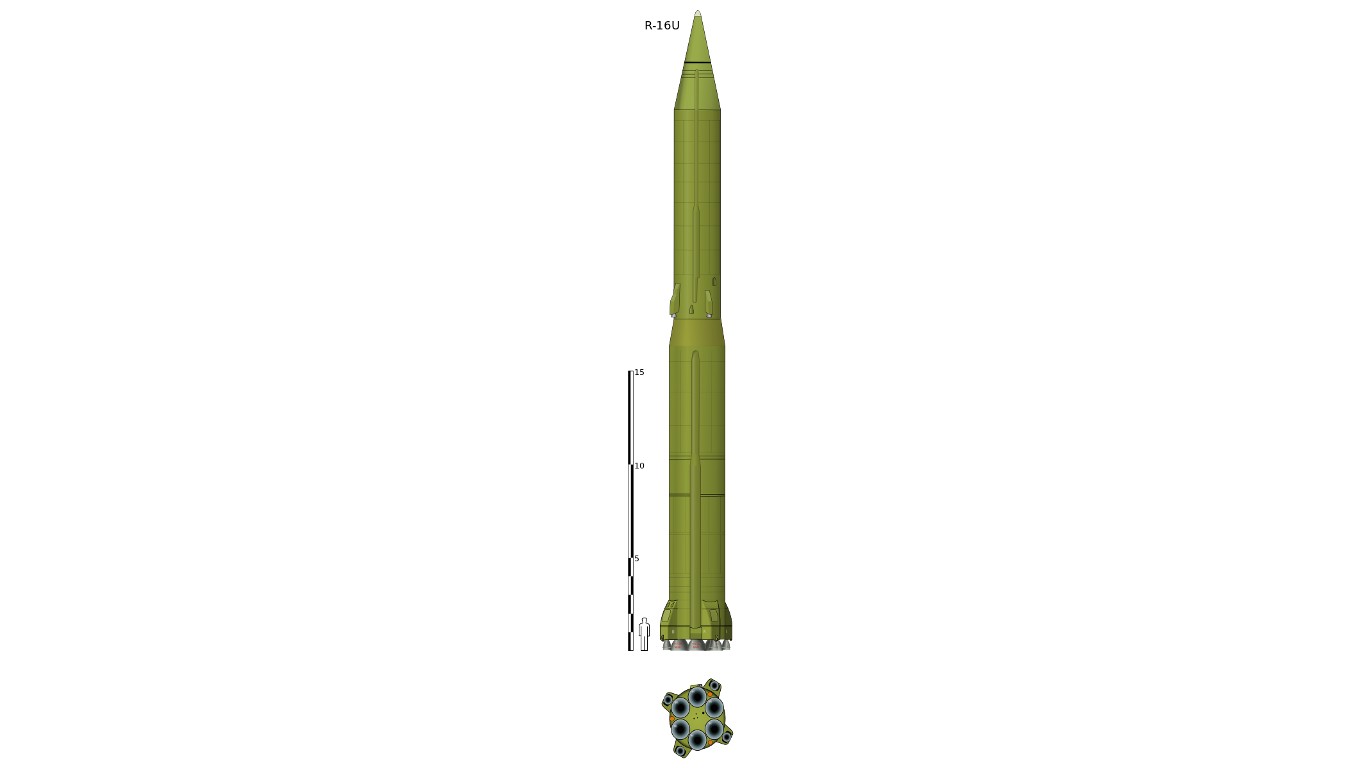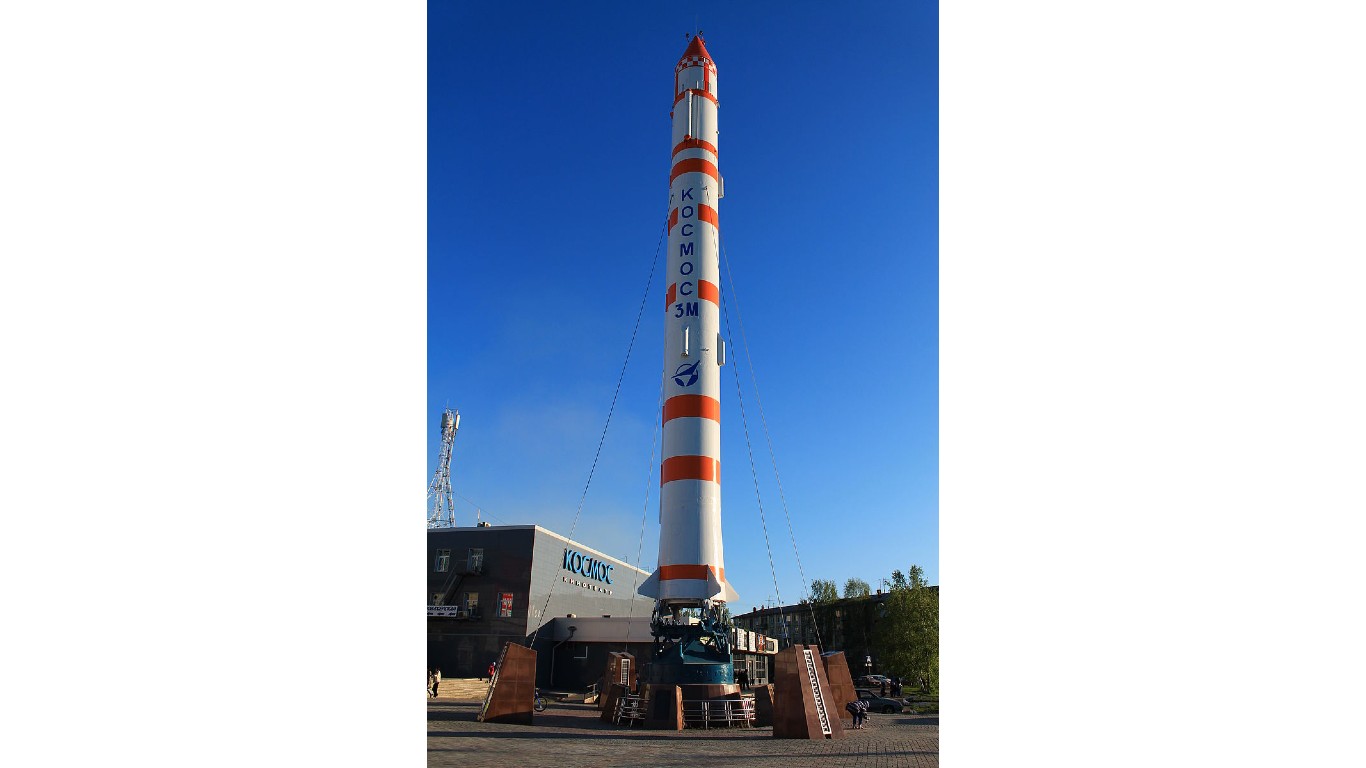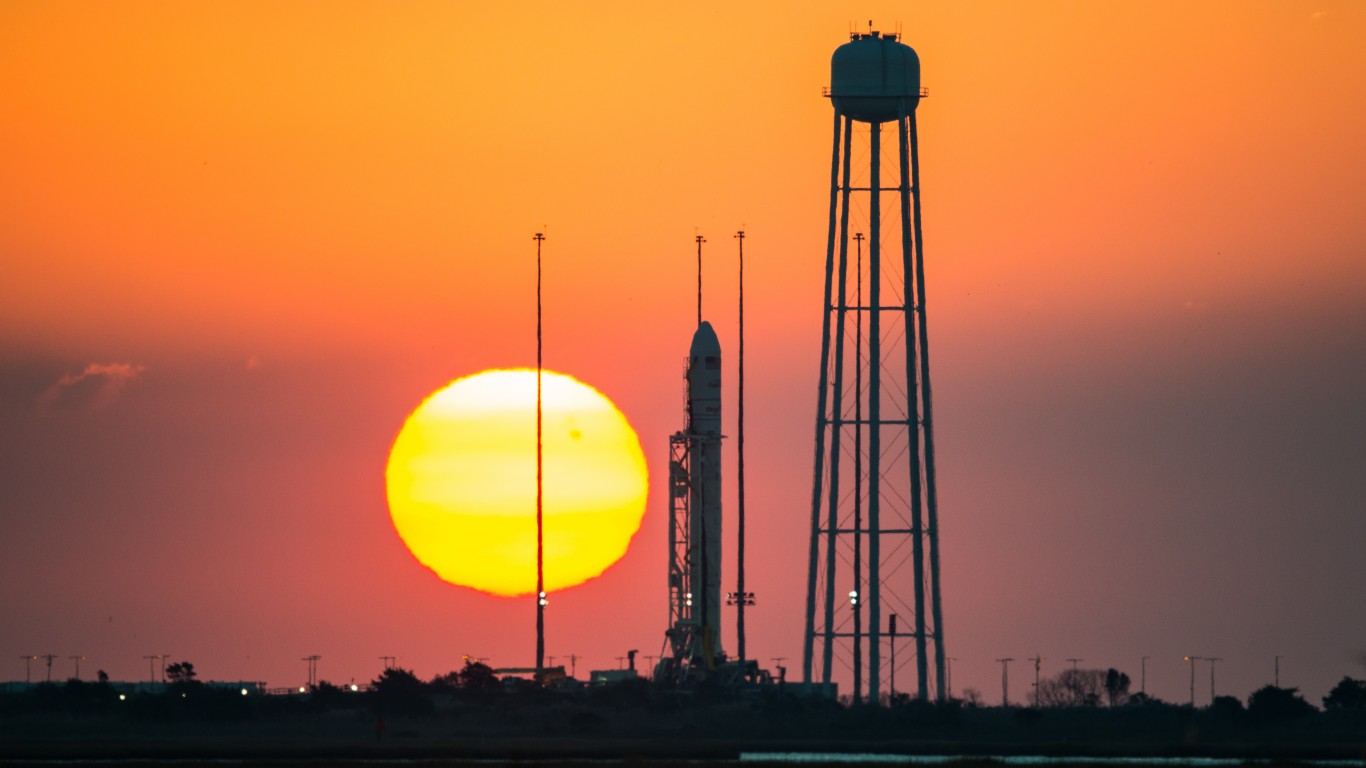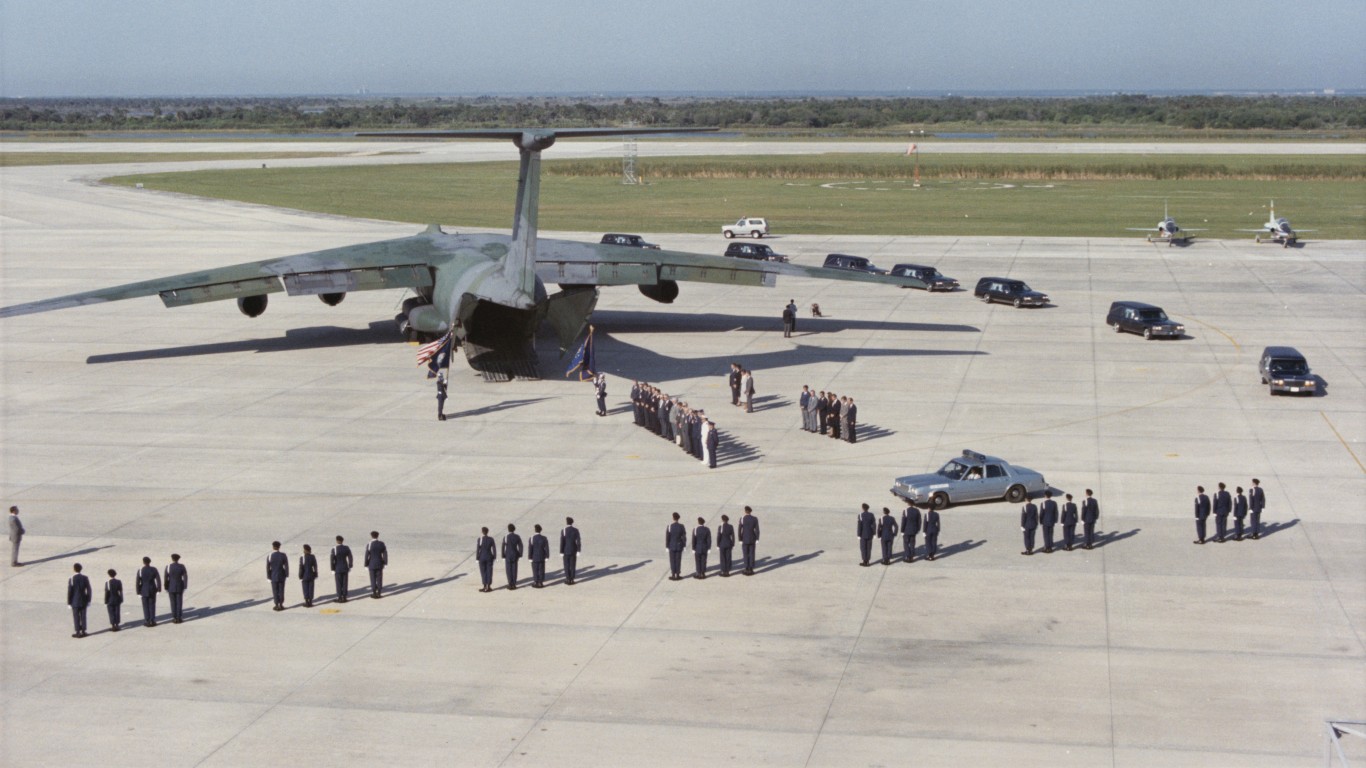
On Friday, A SpaceX Falcon 9 rocket completed a successful launch from Cape Canaveral, carrying commercial communications equipment as well as NASA’s TEMPO earth observation instrument. It was the 23rd launch of the year by Elon Musk’s spacefaring organization, which is by far the most popular owner of satellites in Earth’s orbit. While the launch went off without a hitch, SpaceX has not always been so lucky. Two Falcon 9’s have been lost during missions, the last being in 2016. But the explosions and breakups of unmanned commercial craft are far from the worst thing to happen in the history of mankind’s ventures into space.
To find the worst disasters in space flight history, 24/7 Wall St. reviewed various media outlets. We included events and explosions from multiple space agencies. Many of the disasters listed ended in the deaths of astronauts, and all resulted in a substantial loss of investment and assets and represented major setbacks in the advancement of spaceflight. The events are listed in chronological order.
Space travel, and the preparations for it, is an extremely dangerous undertaking. Space travelers can face extreme temperatures because of a lack of oxygen, lack of gravity, the loss of cabin pressure. On the ground, personnel working on the rocket at the launch pad are handling highly flammable materials. (Also see, the largest spacecraft to crash back to Earth.)
Many of the tragedies occurred during training incidents in high-oxygen environments where a single spark can ignite a fire. Others happened at launches or on reentry back into Earth’s atmosphere. Not all of the aircraft involved were designed for going into outer space. Some, such as the X-15, were used in sub-orbital or atmospheric flights. Even so, crew members of such aircraft fly at high Mach speeds and are subject to high gravitational forces (g-forces).
With the end of the Cold War, we have more information about the extent of Soviet space tragedies as well as the success and reliability of its technology. Yet even today, we still do not know the full human cost of Chinese space mishaps.
Click here to see 20 of the worst disasters in space flight history.
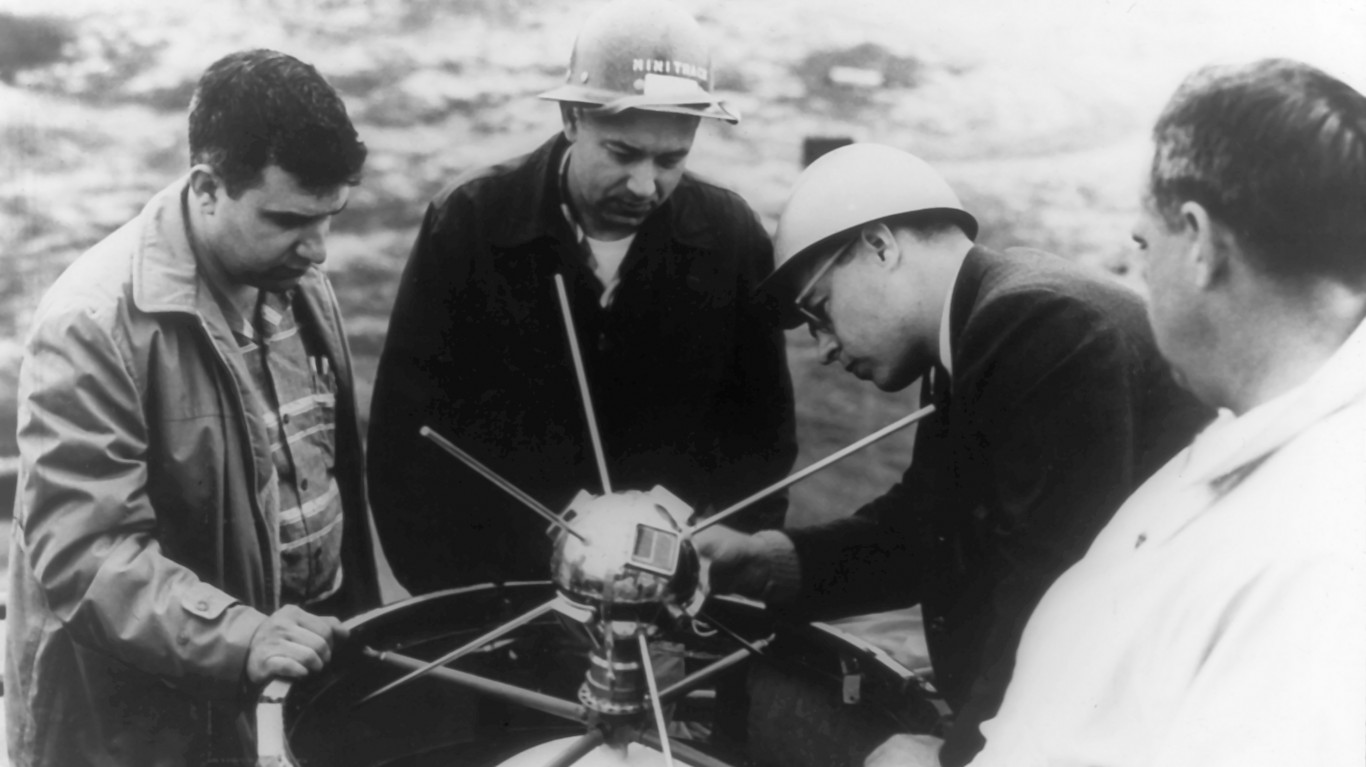
1. Vanguard TV-3
>Date: Dec. 6, 1957
>Agency: NASA
>Mission: Satellite launch
In the wake of the successful launch of the Soviet satellite Sputnik in October 1957, the U.S. supercharged its two space programs: the National Academy of Sciences, and the joint U.S. Army Ballistic Missile Agency-Jet Propulsion Laboratory project. Two months later, the Vanguard Test Vehicle 3, developed by the Naval Research Laboratory and led by the National Academy of Sciences, lifted off to about a height of 4 feet, then the engine thrust gave out and it fell back onto the pad and exploded.
The press called the failed attempt “Flopnik” and “Kaputnik.” The result of the fiasco and the inefficiency of different organizations pushed the U.S. government to create a single space agency, the National Aeronautics and Space Administration, in 1958.
The Vanguard satellite, the 6-inch 3-pound satellite which was thrown away from the explosion and damaged, was recovered and is on display at the Smithsonian Institution’s National Air and Space Museum in Washington, D.C.
[in-text-ad]
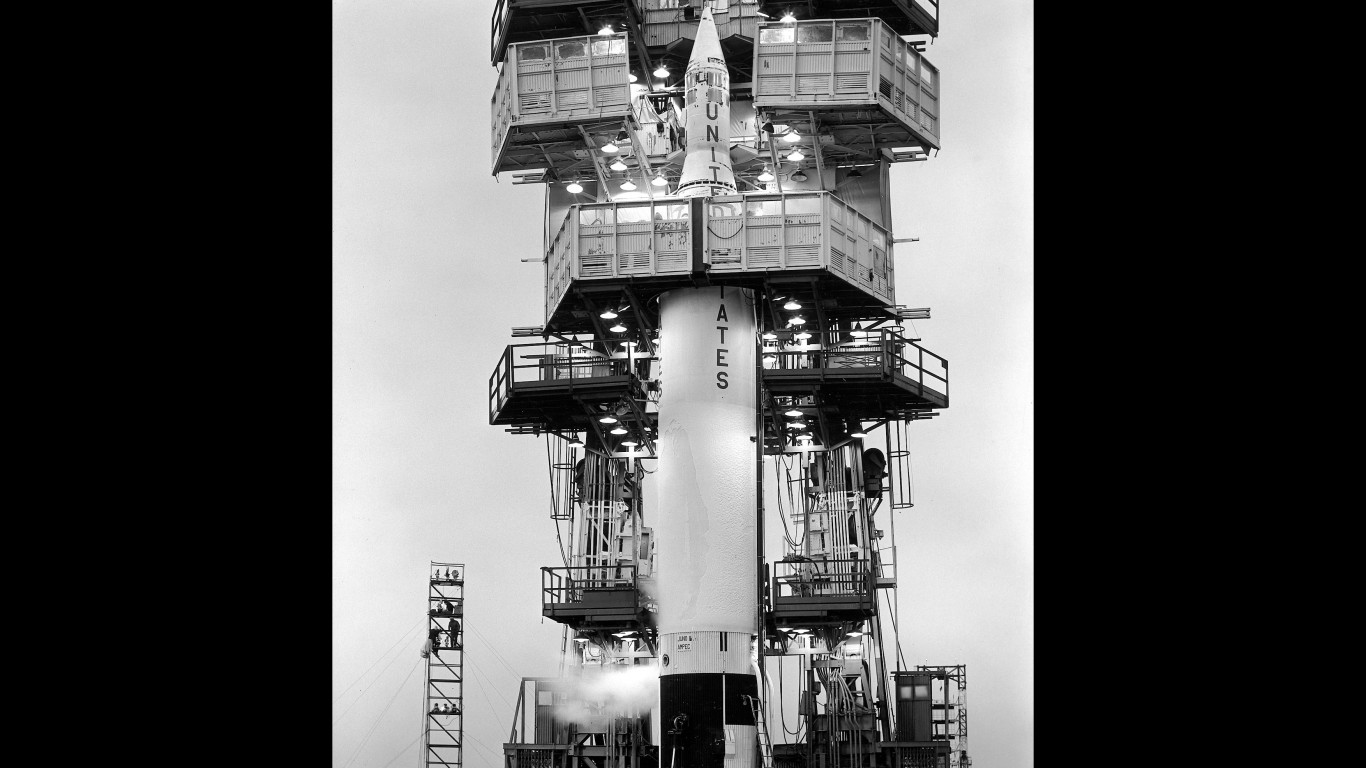
2. Juno II rocket
>Date: July 16, 1959
>Agency: NASA
>Mission: Satellite launch
On July 16, 1959, NASA launched the Juno II rocket carrying the Explorer S1 satellite. During takeoff at Cape Canaveral, Florida, the four-stage rocket veered off course toward the Florida mainland and was ordered to self-destruct by the launch site’s safety officer at a height of 100 feet. This was the third Juno II mission, and the first to fail during launch. No one was hurt.
The Juno II rocket was developed for lifting relatively heavy payloads. Of the 10 rocket launches between Dec. 6, 1958 and May 24, 1961, five missions failed because of rocket malfunctions during launch.
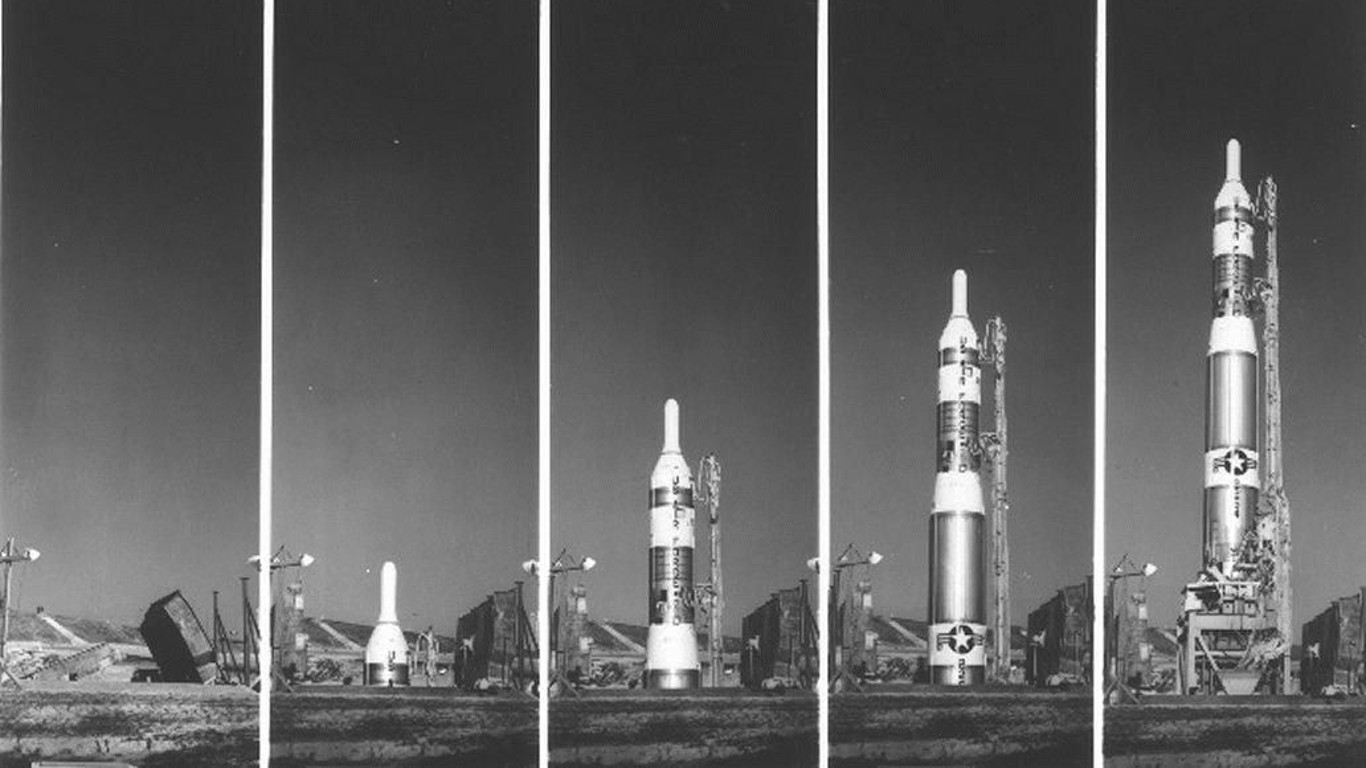
3. Titan I
>Date: Dec. 12, 1959
>Agency: NASA
>Mission: Test flight
At the dawn of intercontinental ballistic missiles, Titan I exploded during a test on Dec. 12, 1959. The 100-ton Titan, the first multistage ICBM and already considered to be the nation’s most powerful weapon at that point, explodedwas torn apart on the launching pad four seconds after launchas the countdown neared zero. The missile’s first-stage destruct section ruptured the fuel tank, and the second stage fell back on the pad and exploded. No one was injured.
4. Soviet R-16 ICBM
>Date: Oct. 24, 1960
>Agency: Soviet Space Program
>Mission: Test flight
The Soviet Union had its own problems developing an ICBM. In 1960, an incident called the Nedelin catastrophe – named after the Soviet officer supervising the rocket launch – claimed the lives of 100 Soviet engineers, technicians, and military personnel.
Nedelin was impatient following delays in launching the rocket and ordered technicians to fix a problem. They proceeded without defueling the rocket’s booster. An errant radio signal triggered the firing of the second stage, causing the rocket to explode. Nedelin was among the fatalities. The rocket’s designer, Mikhail Yangel, survived only because he had gone into a bunker to smoke a cigarette.
[in-text-ad-2]
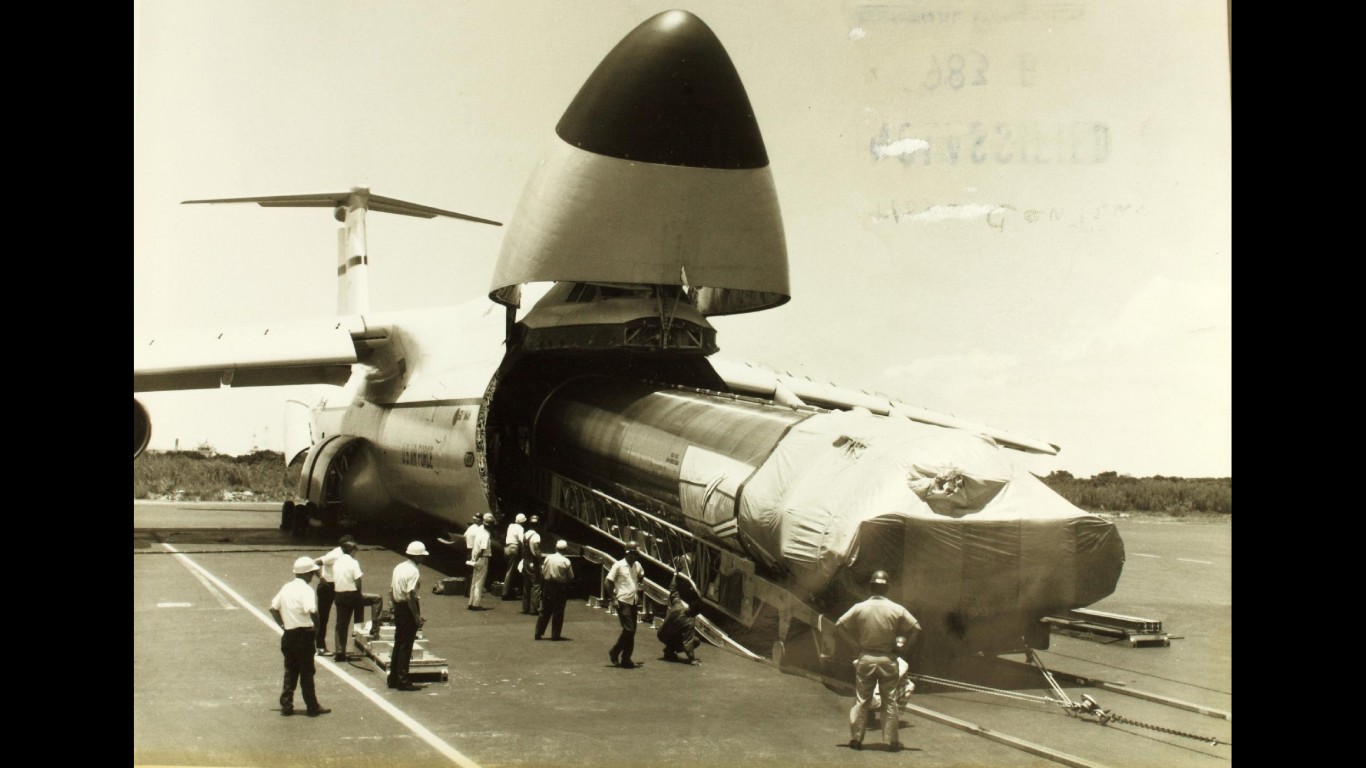
5. Atlas Centaur 5
>Date: March 2, 1965
>Agency: NASA
>Mission: Test flight
The Atlas-Centaur AC-5 vehicle was launched on March 2, 1965. Within about one second after launch, the thrust of the Atlas booster engine decayed and the vehicle collapsed onto the launch pad and was consumed by fire and an explosion. The loss of booster engine thrust was due to fuel depletion from the turbopump inlets. This was attributed to the closing of the fuel staging valve.
To prevent such a guidance system failure on future flights, some redundant circuitry was eliminated and more thorough checkout procedures adopted.
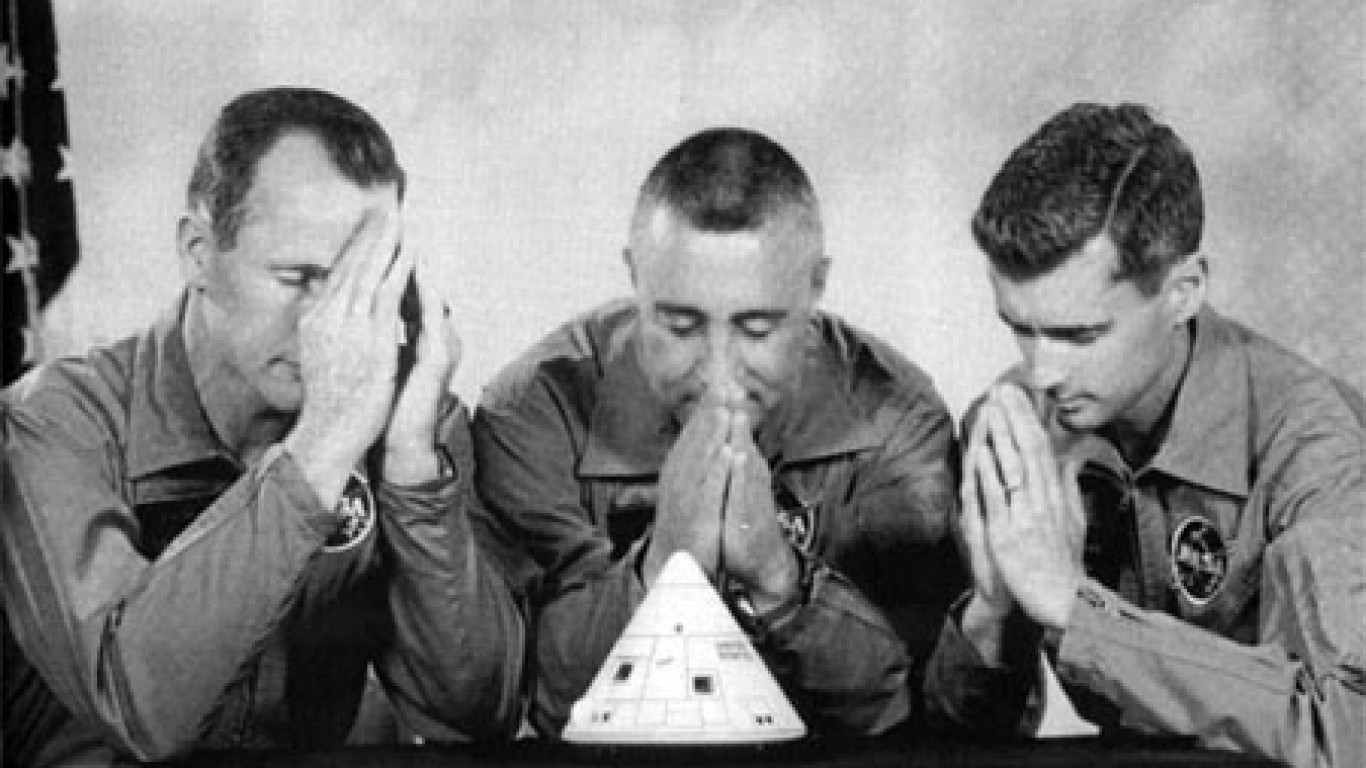
6. Apollo 1
>Date: Jan. 27, 1967
>Agency: NASA
>Mission: Apollo 1
The first fatalities for NASA occurred on Jan. 27, 1967. Astronauts Virgil Grissom, Edward White, and Roger Chaffee, the first crew members of the Apollo program, were killed after a fire engulfed their command module during a launch rehearsal. A NASA review board found that a stray spark ignited the fire in the pure oxygen environment. Flammable features such as nylon netting and foam pads fueled the inferno. To make matters worse, pressure inside the spacecraft sealed the hatch door and the astronauts could not open it.
The Apollo program was designed to take astronauts to the moon for orbital and landing missions. The tragedy set back the American space program, and it would take more than 18 months of delays and redesigns before NASA astronauts returned to space.
[in-text-ad]
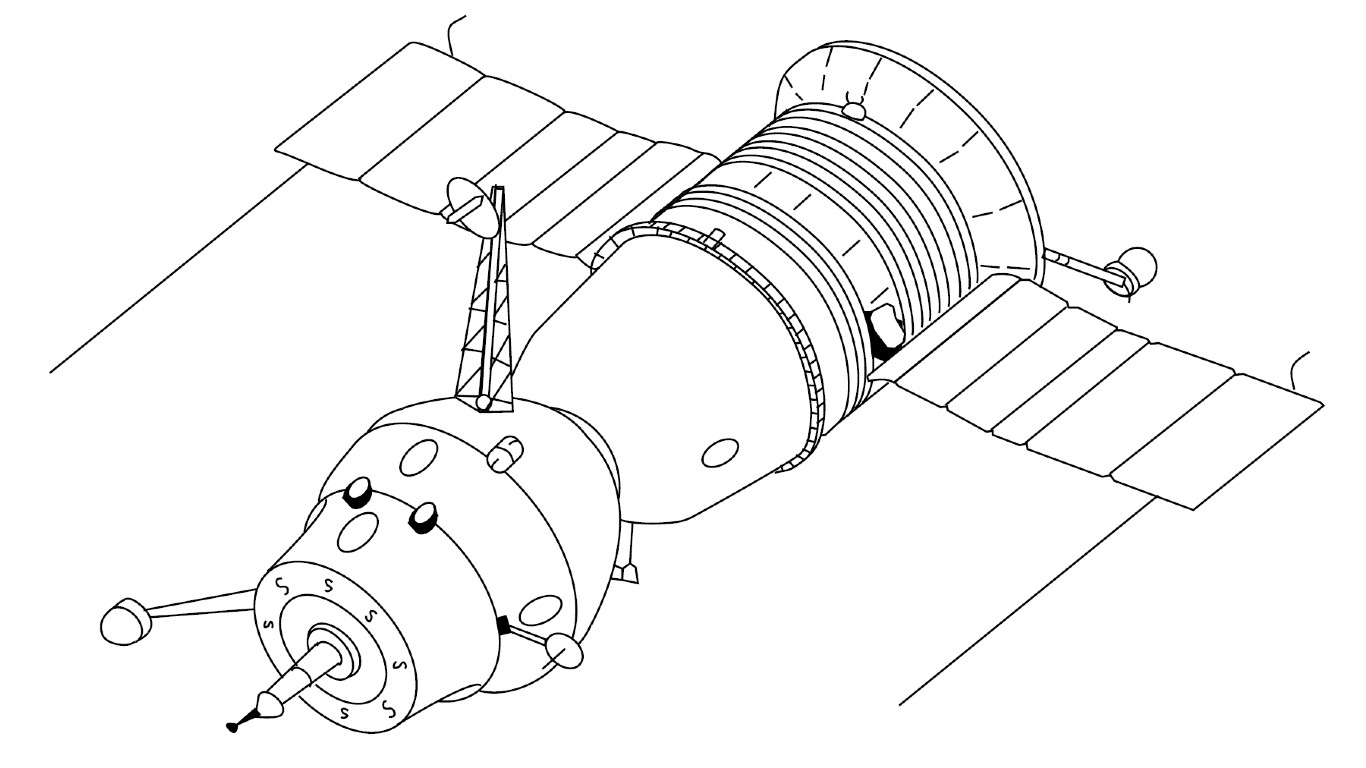
7. Soyuz 7K-OK
>Date: April 23, 1967
>Agency: Soviet Space Program
>Mission: Soyuz 1
The first crewed Soviet Soyuz spacecraft ended in disaster. The main braking parachute failed to deploy, which caused the vehicle to hit the ground at a speed of 50 meters per second. Cosmonaut Vladimir Komarov was killed, the first in-flight fatality in the history of spaceflight. The tragedy occurred just three months after the Apollo catastrophe in which three American astronauts died. After the accident of Soyuz 1, the spaceship was redesigned.
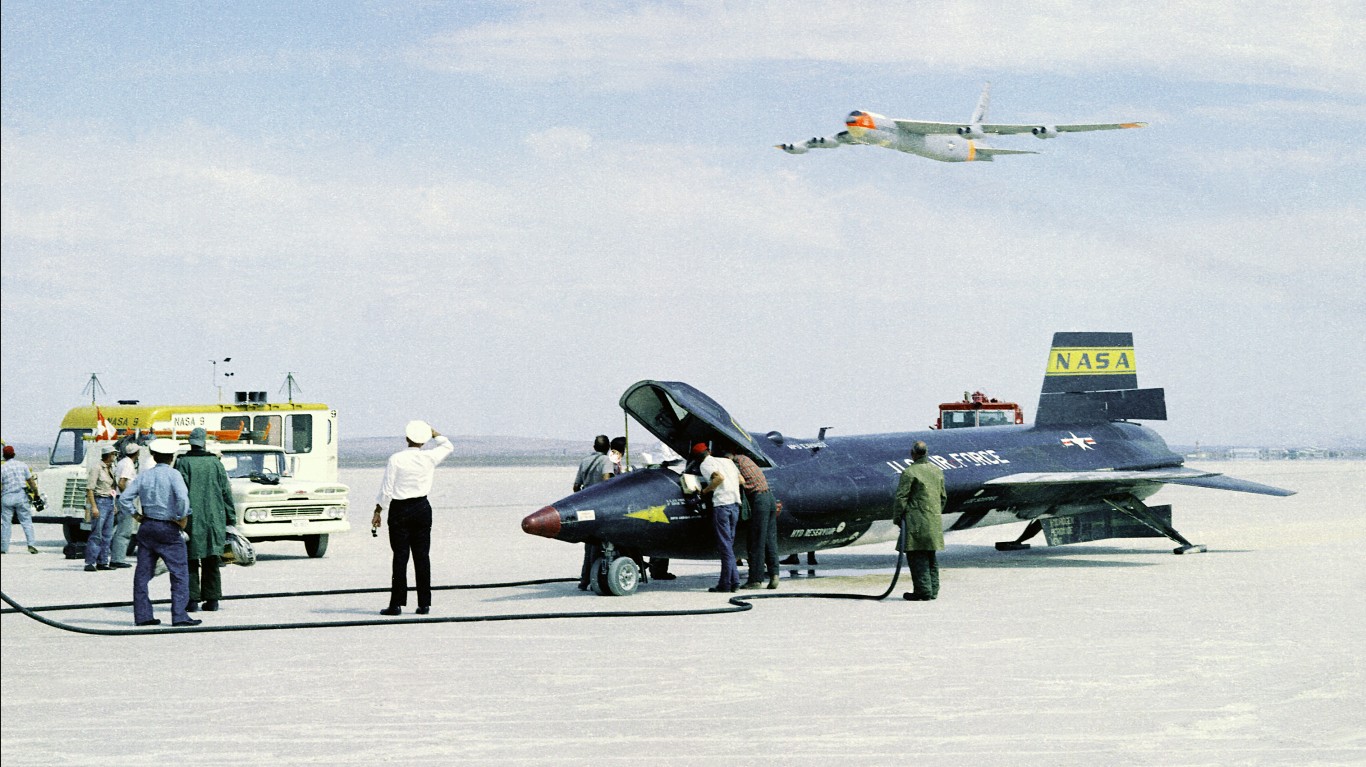
8. X-15
>Date: Nov. 15, 1967
>Agency: NASA
>Mission: X-15 Flight 191
The X-15 was a joint research program that NASA conducted with the Air Force, the Navy, and North American Aviation Inc. The X-15 was an experimental aircraft that set unofficial speed and altitude records for crewed flight. Because of how hot aircraft get upon entering the atmosphere, the program was set specifically to investigate piloted hypersonic flight in the areas of aerodynamic performance, structural behavior, and pilot performance and physiology during high heating, among other things. Information from the program contributed to the Mercury, Gemini, Apollo, and Space Shuttle piloted space flight programs.
The overall program was a success but not without tragedy. On Nov. 15, 1967, during pilot Michael Adams’ seventh flight, he could not bring the aircraft out of an inverted dive because of a technical problem with the adaptive flight control system. The plane crashed, killing him.

9. Soyuz 7K-OKS
>Date: June 30, 1971
>Agency: Soviet Space Program
>Mission: Soyuz 11
Cosmonauts Georgy Dobrovolsky, Vladislav Volkov, and Viktor Patsayev died in space on June 30, 1971. The crew had set a record for time in space at 23 days. During that time, the Soyuz 11 spacecraft docked with the Soviet Salyut-1 orbital station. The three were heroes in the Soviet Union.
When the capsule returned to Earth, it appeared to land without a problem in what is now Kazakhstan. But when rescue teams arrived, they found all three crew members dead. All had suffocated. The cause was traced to a defective breathing ventilation valve, which had come open too early and depressurized the spacecraft. The crew ran out of air and suffocated before they could close the valve. The three cosmonauts were buried underneath the Kremlin Wall. After the Soyuz-11 tragedy, Soviet crewed flights were suspended for two years.
[in-text-ad-2]
10. Kosmos 3M
>Date: June 26, 1973
>Agency: Soviet Space Program
>Mission: Satellite launch
With the Cold War heating up, a search team of the Soviet Ministry of Defense chose the village of Plesetsk in the Archangel region, about 500 miles north of Moscow, as the first operational base for the R-7 missile. Plesetsk would be one of the sites under surveillance by Francis Gary Powers, the U.S. pilot shot down by the Soviet Union on a reconnaissance flight in 1960.
It was at Plesetsk that tragedy occurred in 1973. The Soviets were preparing to use the missile launcher Kosmos-3M, which had been in use for about six years at that point. Trouble started when a sensor malfunction indicated the fuel tank was overfilled. Launcher personnel drained some of the fuel and refueled the launcher, but the fuel tank started leaking and the launch sequence was stopped. The launch was canceled and the launch team tried to deactivate the vehicle. A few minutes later, two explosions occurred followed by fire. Nine people died.

11. Space Shuttle Challenger
>Date: Jan. 28, 1986
>Agency: NASA
>Mission: STS-51-L
With a crew of seven, including New Hampshire school teacher Christa McAuliffe, the Challenger space shuttle was intended to orbit Earth while the astronauts deployed a satellite and studied Halley’s Comet. A minute after takeoff, the spacecraft was ripped apart. Faulty seals in one of the rocket boosters had led to an explosion. All crew members perished. It was the first time NASA had lost astronauts in flight.
The tragedy immediately grounded the shuttle program. The report from the Rogers Commission report faulted NASA, its Marshall Space Flight Center in Huntsville, Alabama, and contractor Morton Thiokol Inc. in Ogden, Utah, for poor engineering and management.
[in-text-ad]
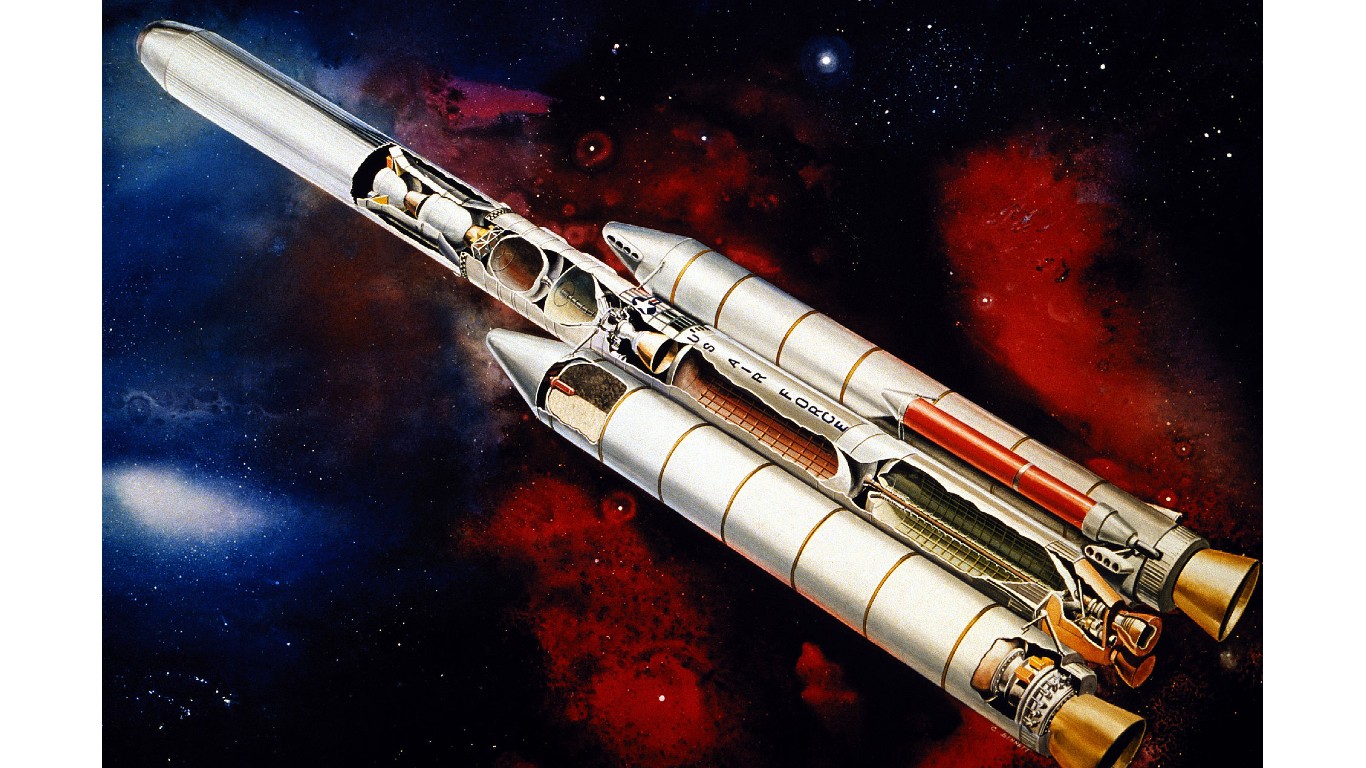
12. Titan 34D-9’s
>Date: April 18, 1986
>Agency: NASA
>Mission: Satellite launch
A Titan rocket carrying a secret military payload exploded at Vandenberg Air Force Base in California. The blast released a cloud of poisonous fumes and damaged the launching pad and 200 acres surrounding it. At least 58 people were treated at the base hospital for skin and eye irritations. Children at a school nearby were ordered to remain indoors until the cloud dissipated.
The $65 million Titan 34D was the largest of America’s uncrewed rockets and could carry large military satellites into orbit.
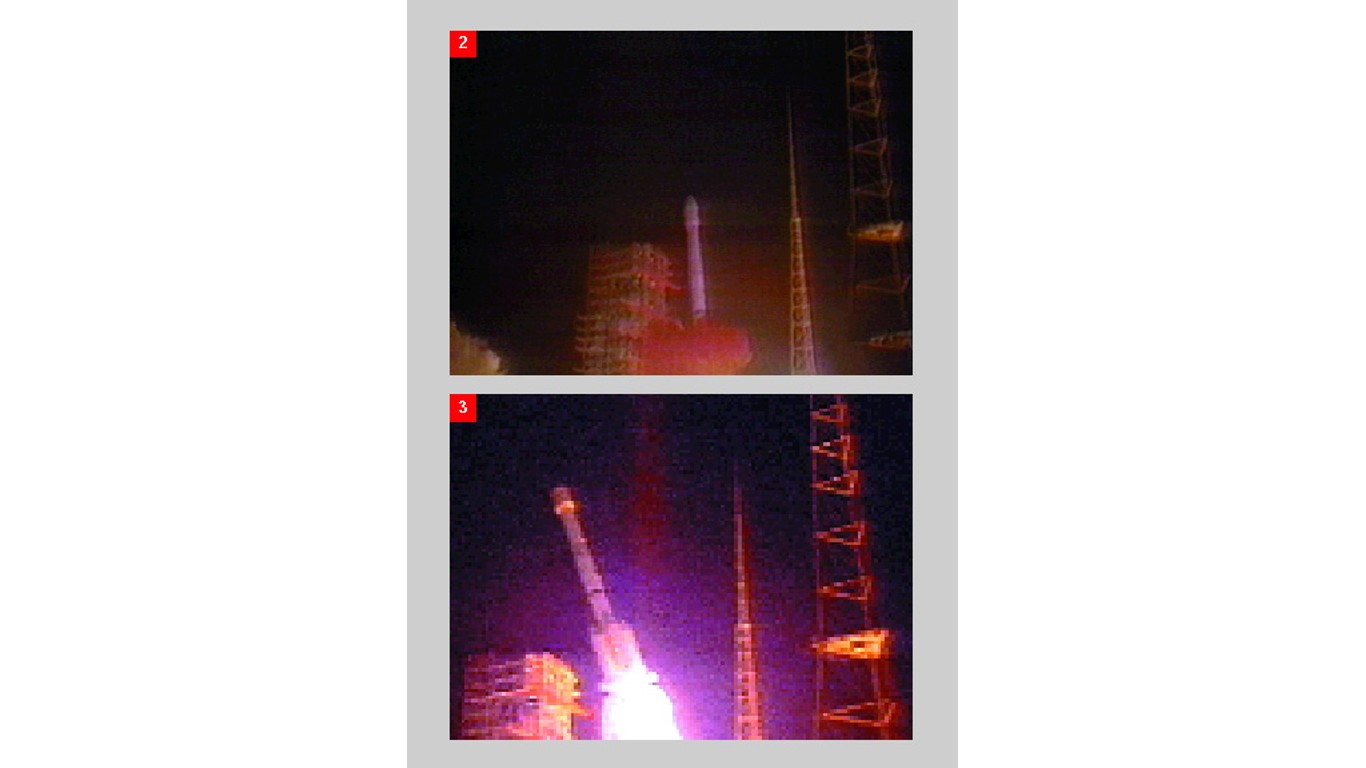
13. Intelsat VII-A
>Date: Feb. 15, 1996
>Agency: China Great Wall Industry Corporation
>Mission: Satellite launch
Probably the worst known accident involving spacecraft during the space age occurred on Feb. 15, 1996 at the Xichang Satellite Launch Center, about 50 miles northwest of Xichang City in the Chinese province of Sichuan. A Chinese Long March 3B rocket launched, carrying the American communications satellite Intelsat 708. It almost immediately veered off course and slammed into the Chinese mainland, to a nearby village. Chinese authorities said six people were killed, but Western experts judging video of the devastated landscape believe hundreds perished.
An investigation of the accident determined that there was a failure in the guidance system of the Long March 3B. The involvement of American companies in the launch caused political controversy in the United States about the use of U.S. technology for the Chinese space program.
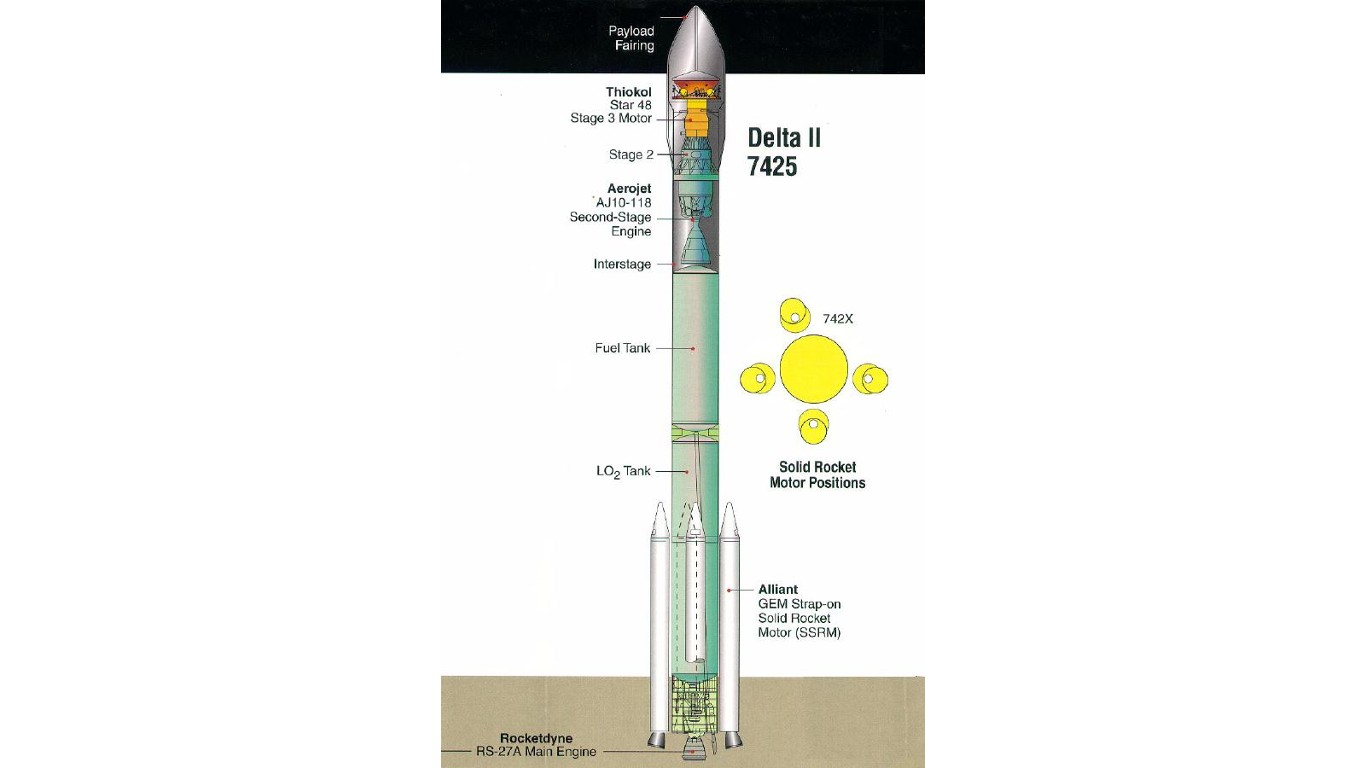
14. Delta II
>Date: Jan. 17, 1997
>Agency: NASA
>Mission: Satellite launch
The Delta II rocket was first launched in 1989 from Cape Canaveral and would eventually fly 155 missions until it would be taken out of service after its last flight on Sept. 15, 2018. During its service, the Delta II launched NASA probes to Mars, Mercury, the moon, and asteroids, as well as 48 global positioning system navigation satellites.
In its nearly 20 years of service, the rocket only failed once. That was on Jan. 17, 1997. As a Delta II attempted to launch the first GPS II-R satellite from Cape Canaveral, 13 seconds into the flight, a solid rocket motor exploded, triggering a blast that dropped debris around the launch complex and set several employee vehicles on fire.
[in-text-ad-2]
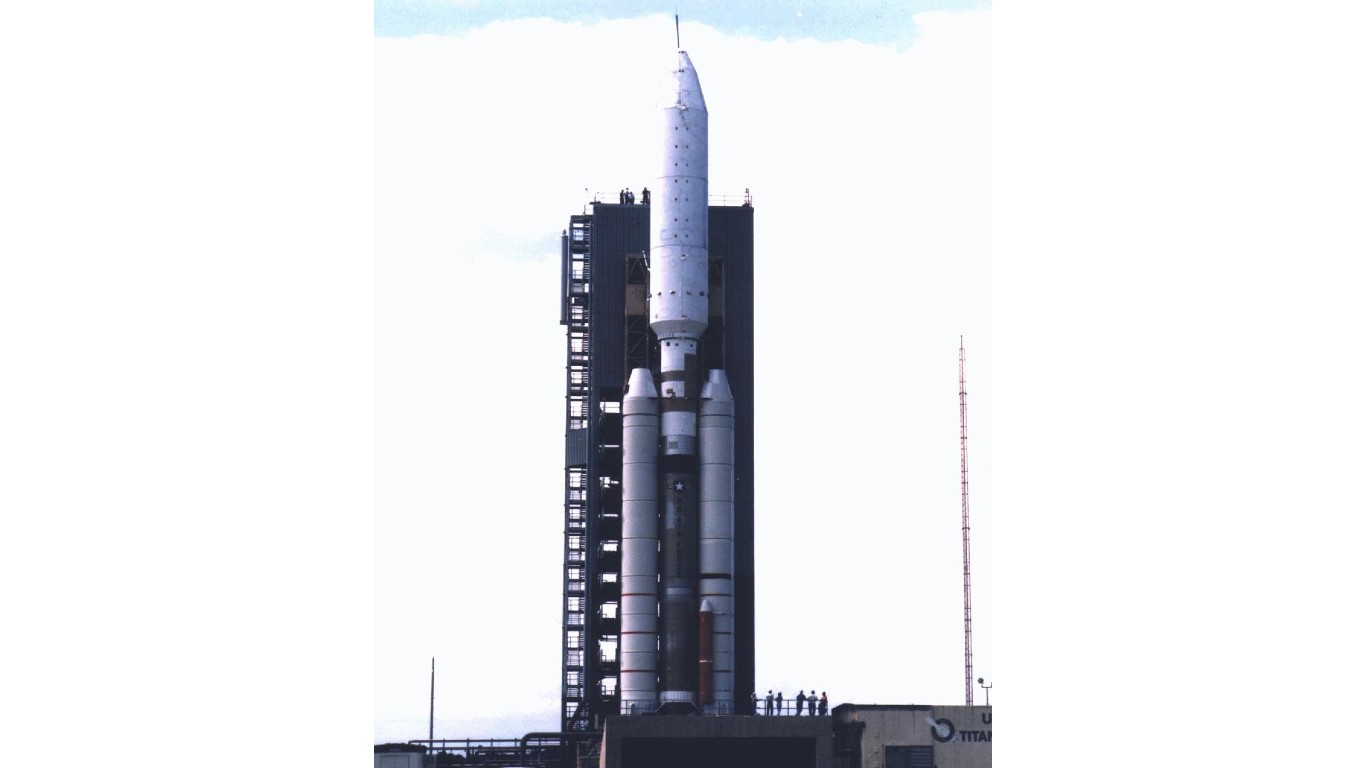
15. Titan IV 4A-20
>Date: Aug. 12, 1998
>Agency: NASA
>Mission: Satellite launch
A Titan IV-A rocket exploded on the morning of Aug. 12, 1998, carrying a $1 billion, Mercury spy satellite. The blast occurred just 40 seconds after liftoff at an altitude of about 20,000 feet when the rocket veered off by about 11 to 13 degrees from its planned path. At that point, the rocket could not sustain aerodynamic stresses. An automatic destruct sequence was activated by mission flight control officers 45 seconds into the rocket’s flight. There were no injuries or damage to property on the ground as a result of the mishap.
A review of spacelift operations by the Air Forces ordered by President Bill Clinton and Defense Department officials determined that engineering and workmanship-related deficiencies contributed to three Titan IV-related space launch misfires within the past year and a half, costing nearly $3 billion.
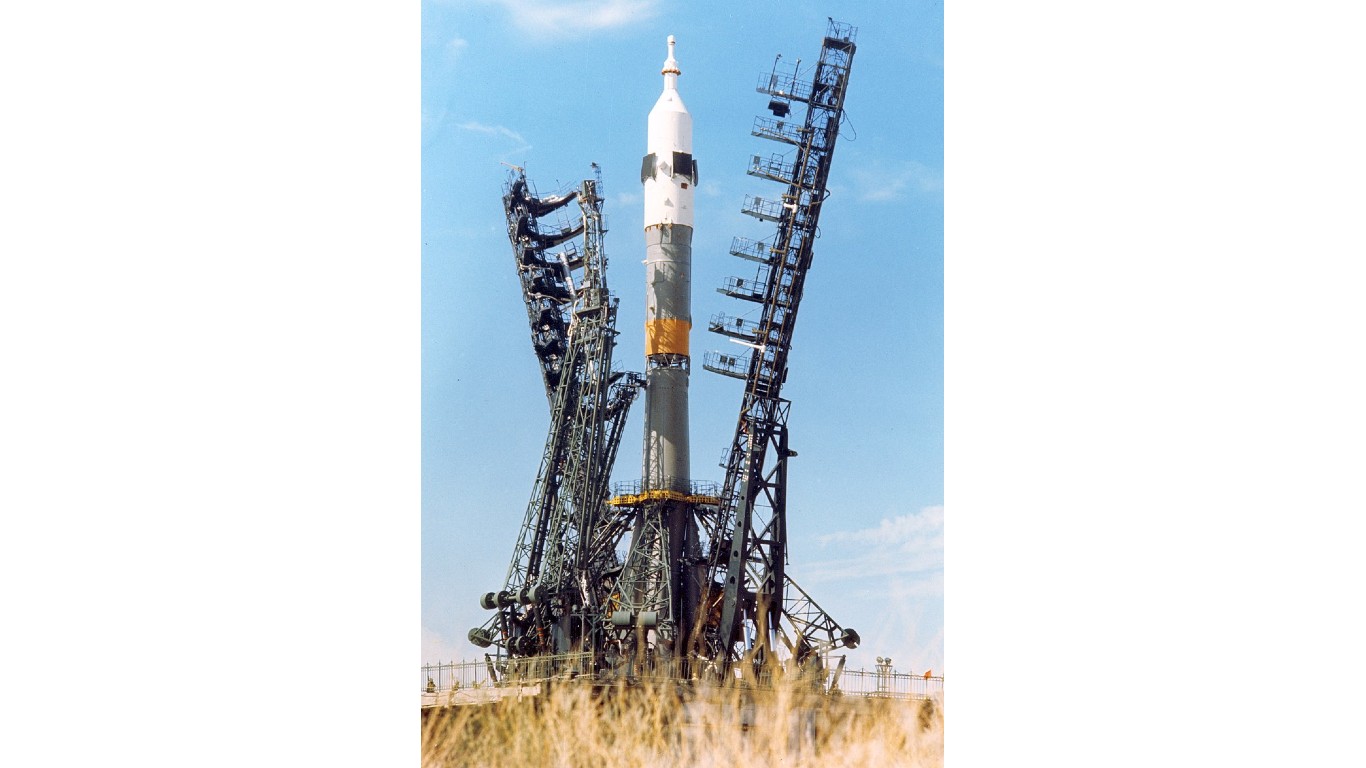
16. Soyuz-U
>Date: Oct. 15, 2002
>Agency: Russian Federal Space Agency
>Mission: Satellite launch
A Soyuz rocket carrying a research satellite exploded on Oct. 15, 2002, just 29 seconds after takeoff from Russia’s Arctic Plesetsk cosmodrome. One person was killed and eight others injured. The rocket carried a satellite with European research equipment and was not connected with the orbiting International Space Station.
Soyuz boosters had been involved in 1,586 missions by the end of 1999 and were considered very reliable. The rocket’s mission reliability at one point was about 98%, among the best in the world. However, Russia’s space program had been hamstrung by underfunding since the collapse of the Soviet Union in 1991, and the financing shortfalls have been blamed for a series of Russian rocket mishaps in the 1990s.
[in-text-ad]
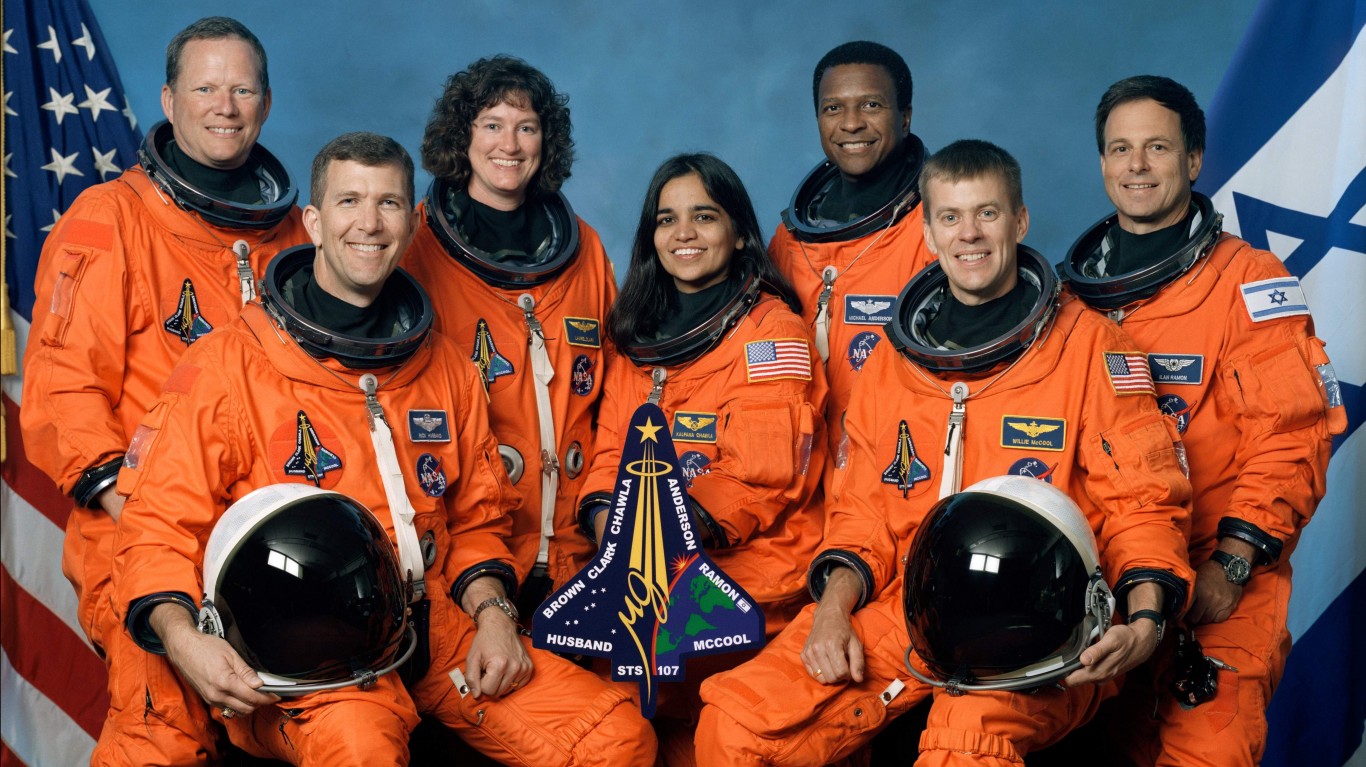
17. Space Shuttle Columbia
>Date: Feb. 1, 2003
>Agency: NASA
>Mission: STS-107
The problems of the Space Shuttle Columbia began when it launched on Jan. 16, 2003. During liftoff, the space shuttle was damaged when a section of foam from its tank sheared off and hit the thermal covering on its left wing. Cameras focused on the launch sequence showed the foam collision, but engineers could not nail down the exact location and extent of the damage.
The seven-member crew completed a 15-day mission in orbit. During reentry, the extent of the damage became apparent as heat melted through the wing and caused a loss of control that led to the disintegration of the orbiter at 40 miles altitude over Texas. All crew members were killed. Debris and the remains of the crew were found in locations across east Texas, Arkansas, and Louisiana.
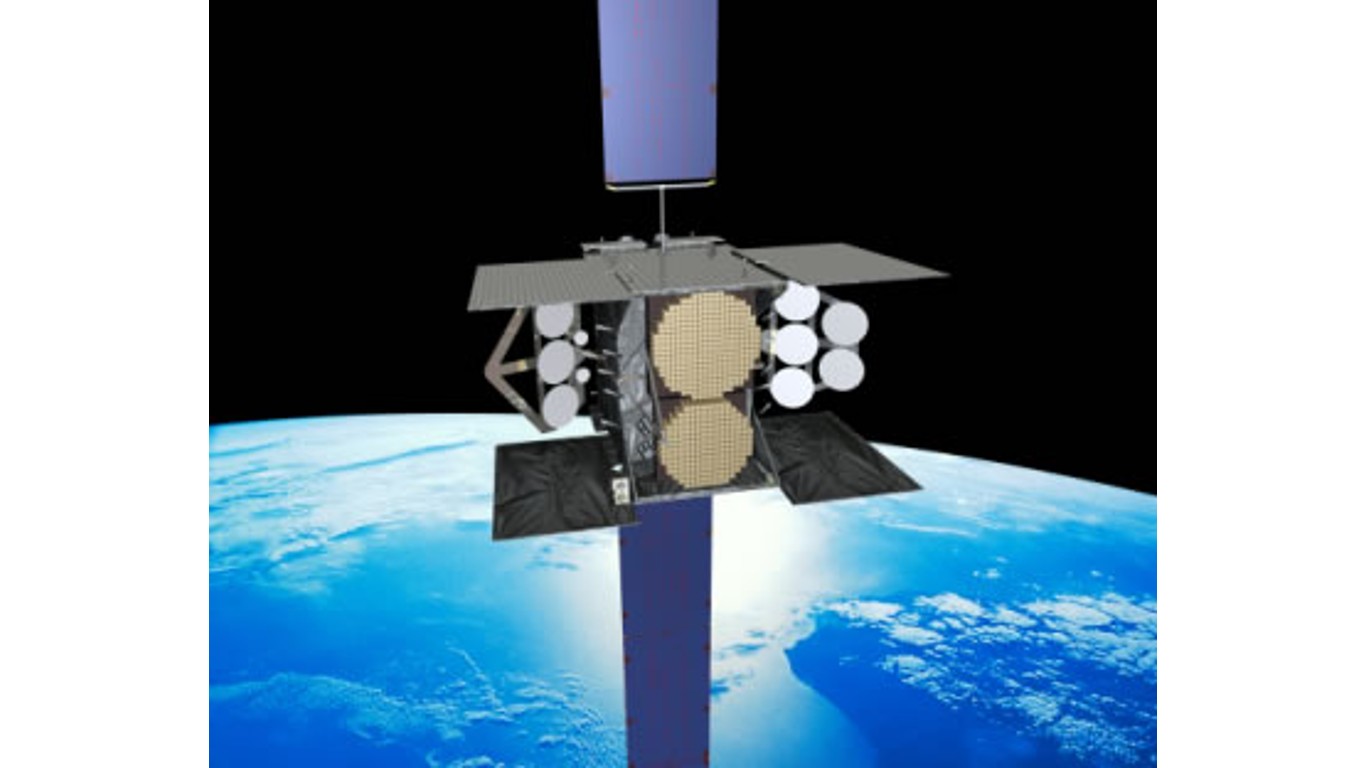
18. Intelsat 27
>Date: Feb. 1, 2013
>Agency: Sea Launch
>Mission: Satellite launch
A commercial Sea Launch rocket failed 40 seconds after liftoff from its floating launch facility – a converted oil platform – in the Pacific Ocean, destroying its cargo, the Intelsat IS-27 telecommunications satellite. The Intelsat 27 satellite was designed to provide 15 or more years of satellite service. It would have completed Intelsat’s global broadband mobility platform, which was to consist of 10 beams on seven satellites. IS-27 was insured for about $400 million.
The failure of the launch set back the Sea Launch’s recovery from its previous failure in January 2007. The Bern, Switzerland-based company is owned by an affiliate of Russia’s RSC Energia space-hardware manufacturer. Sea Launch had emerged from Chapter 11 bankruptcy protection in October 2010. The reorganization was an indirect result of the 2007 failure.
19. Antares rocket
>Date: Oct. 28, 2014
>Agency: NASA
>Mission: Orb-3 resupply
On Oct. 28, 2014, a commercial Antares rocket built by Orbital Sciences Corp. exploded in a spectacular fireball just after liftoff at NASA’s Wallops Flight Facility in Virginia. Orbital’s uncrewed Antares rocket tumbled back into the launch pad. NASA officials reported no injuries, and Orbital Sciences representatives said property damage was limited to the south end of Wallops Island.
NASA chose Orbital Sciences to provide eight cargo delivery missions to the International Space Station. The Virginia-based company launched its first official cargo mission to the space station in January 2014, with a second mission following in July. Both missions, as well as two test flights in 2013, were successful.
[in-text-ad-2]
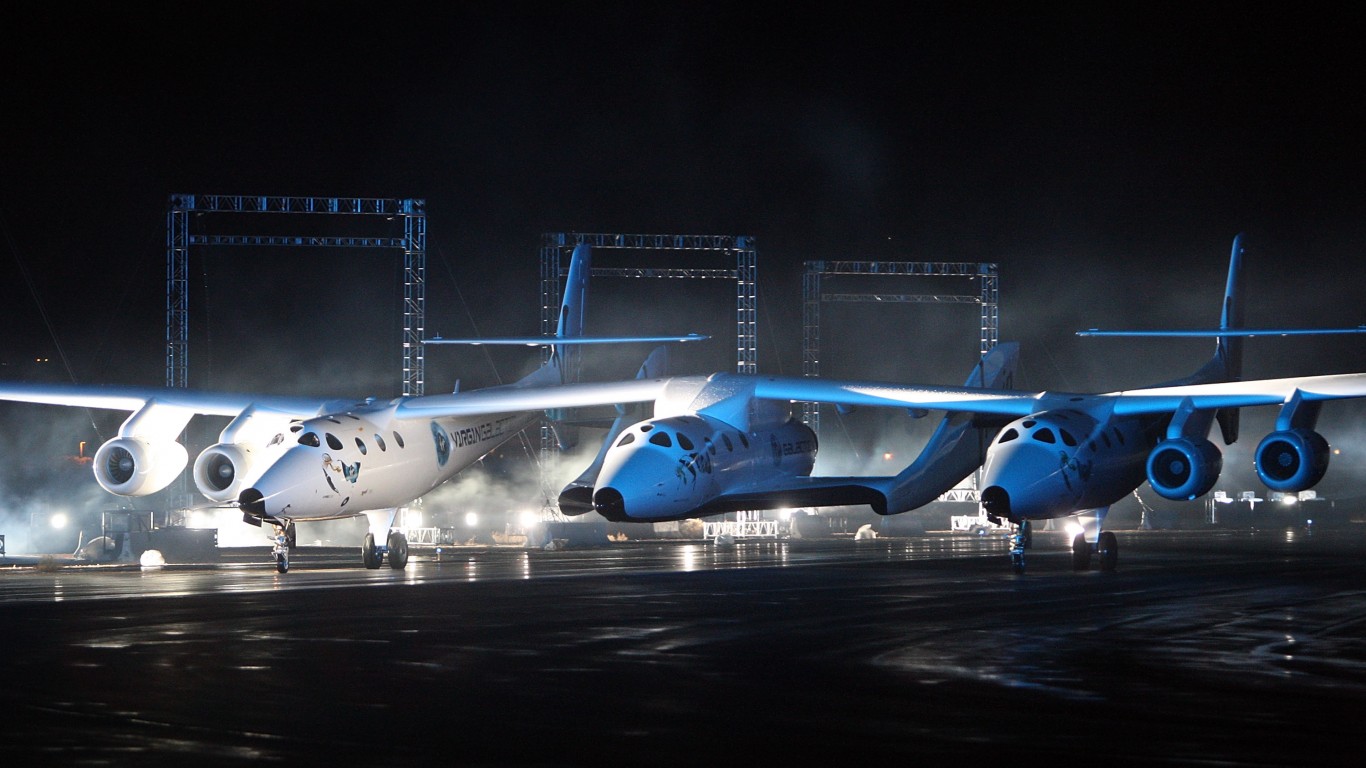
20. SpaceShipTwo VSS Enterprise
>Date: Oct. 31, 2014
>Agency: Virgin Galactic
>Mission: Test flight
SpaceShipTwo is a suborbital space plane for space tourism. During a test flight over the Mojave Desert in California conducted with its partner, Scaled Composites, the first SpaceShipTwo was climbing when a descent mechanism deployed prematurely, causing the ship to break apart in mid-air. The disintegration killed pilot Michael Alsbury and seriously injured the other crewperson, who was able to escape the wreckage and deploy his parachute.
The flight was intended to test a new hybrid rocket engine powered by a polyamide-based fuel instead of the rubber-based fuel HTPB that was previously used in the other tests of SpaceShipTwo. A National Transport Safety Board investigation said an analysis of telemetry and video recorded aboard the SpaceShipTwo showed its aero-braking device deployed earlier than designed, and two seconds after it was deployed, the VSS Enterprise disintegrated.
Thank you for reading! Have some feedback for us?
Contact the 24/7 Wall St. editorial team.
 24/7 Wall St.
24/7 Wall St.